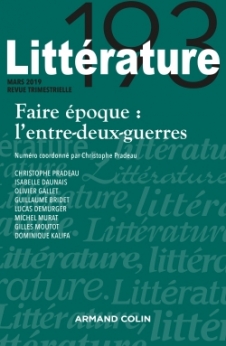
Littérature nº193 (1/2019)
Pour acheter ce numéro, contactez-nous
Recevez les numéros de l'année en cours et accédez à l'intégralité des articles en ligne.
Le roman des années 1920 a multiplié les scènes dans lesquelles le person-nage (ou le narrateur) se voit confronté à une transformation abrupte du temps et de ce qui l’y rattache : plutôt que d’apparaître dans sa continuité, le temps s’offre sous la forme de la contiguïté et de l’intermittence, le personnage se trouvant alors non plus emporté par le temps, mais placé face à lui, comme s’il en regardait le spectacle. Cet article propose de voir comment ces scènes emblématisent la manière dont la période de l’entre-deux-guerres s’est éprouvée et pensée comme époque.
Novels of the 1920s abound in scenes in which the character (or the narrator) is confronted with an abrupt transformation of time and of what links him to it : instead of appearing in its continuity, time exposes itself in the form of contiguity and intermittency, the character being then not any longer brought away by time but rather placed in front of it as if he were watching its performance. This article proposes to show how these scenes emblematically stand for how the interwar years made themselves and thought themselves as an epoch.

